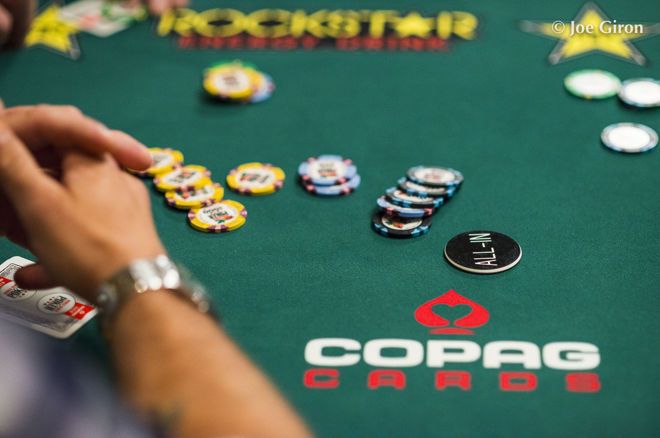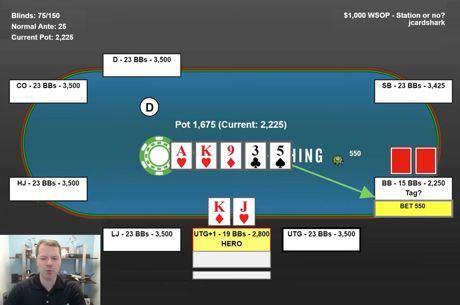Dealing With a Short Stack All-In in a Small Stakes WSOP Event

For the last couple of weeks I have been sharing hands that highlight short-stacked strategy in tournament poker. Today I have another hand that helps us continue with the same subject �� in this case, a hand where we are facing an all-in from a short-stacked opponent and have to decide whether or not we want to call.
The tournament was a $1,000 buy-in World Series of Poker event, and with the blinds 100/200 it folded around to the button who with 3,500 (not quite 18 big blinds) to start chose to push all in.
I was in the small blind with A?9? and a stack of 8,000 to start the hand. Meanwhile the big blind had a stack of similar size to the button.
In the video below, I take some time estimating what the button's range might be and how ace-nine compares to the hands in that range.
I'll let you listen to that discussion below and see what I decided to do. But before you do �� what is your thinking here? Do you call or fold with ace-nine?
Take a look:
In the end the math showed I was often either break-even or way ahead with ace-nine, making it correct to call.
It is always important that you accurately assess your opponent's range and call off accordingly. Consider what hands you dominate and which hands you don't. If most of your opponent's range dominates you, make the fold, but if you dominate most of your opponent's range, make the call.
Jonathan Little is a professional poker player and author with over $6,900,000 in live tournament earnings. He writes a weekly educational blog and hosts a podcast at JonathanLittlePoker.com. Sign up to learn poker from Jonathan for free at PokerCoaching.com. You can follow him on Twitter @JonathanLittle.









